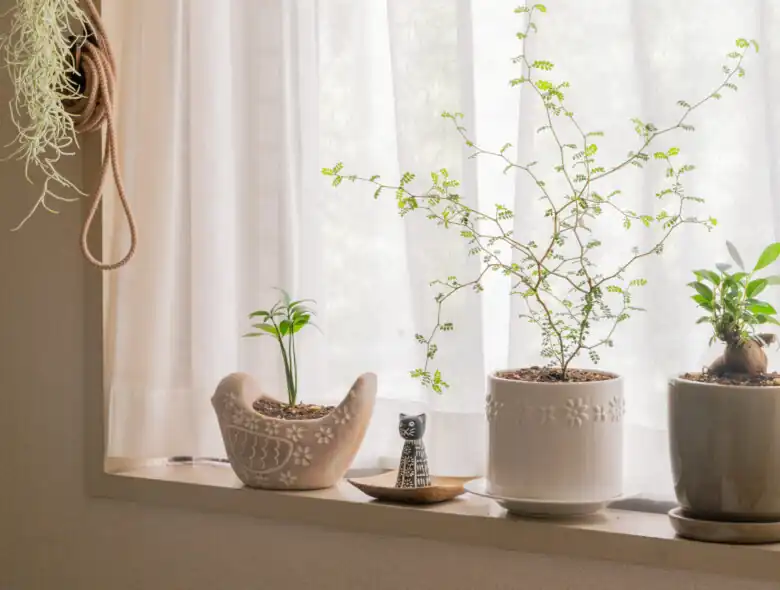Elegant and comfortable Nordic interior design. Many people dream of designing a room with a Nordic interior style as the main theme, but are unsure how to proceed. You might wonder, “I love the Nordic look, but is this the right way to incorporate it?”
In this article, we’ll share practical tips and key points to help you create a Nordic-inspired interior that’s both stylish and comfortable. Whether you’re just getting started or fine-tuning your design, we hope this guide will provide you with valuable insights.
Village House offers affordable rental properties starting from just ¥ 20,000 across Japan. If you’re looking for a new place to call home, be sure to check out our website for more information.
What is Nordic interior design?
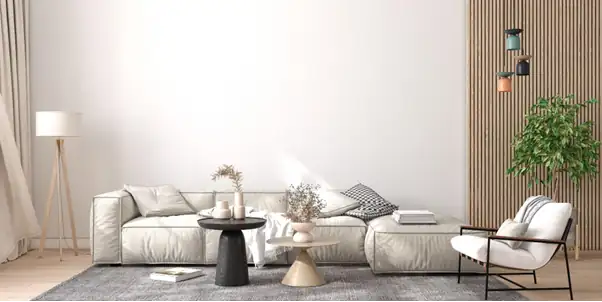
The term “Nordic” refers to the five countries in northern Europe that are part of the Nordic Council: Denmark, Norway, Sweden, Finland, and Iceland.
This region is renowned for its stunning natural landscapes and rich cultural heritage. However, the long, harsh winters come with short daylight hours, often only around six hours a day, which makes for a challenging environment. To cope with the extended cold and limited sunlight, Nordic people have mastered the art of creating warm, inviting spaces. They often use soft color palettes and indirect lighting to foster a cozy atmosphere, placing a high value on comfort during the long indoor hours.
Use of light color schemes for the walls
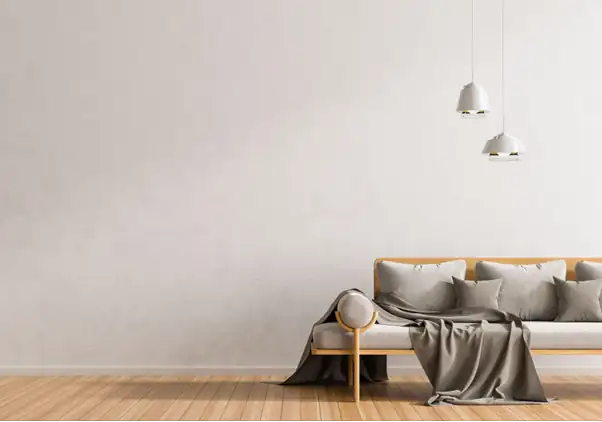
In Scandinavian interiors, gentle, neutral colors serve as the foundation for the design. Shades like beige, off-white, and light gray are commonly used for walls, creating a bright, calming atmosphere.
Given the long, dark winters in the Nordic region, these light tones help make rooms feel brighter and more spacious. The choice of light colors is intentional, as they help counterbalance the limited daylight hours.
To add warmth, accent colors such as red, orange, and yellow are incorporated. These hues complement wooden furniture and natural beige fibers, contributing to a cozy and inviting atmosphere.
Scandinavian design isn’t limited to warm colors though. Cool tones like blue and green are also popular choices. The style often draws inspiration from the earthy colors found in nature, blending seamlessly with the surroundings to create a comfortable and harmonious space.
Use of low saturation colors to unify the color scheme
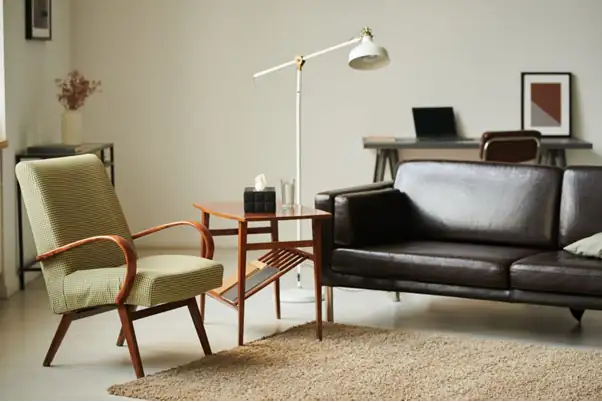
Saturation refers to the vividness of a color, with low saturation colors being softer and more subdued. In Scandinavian interiors, earth tones with low saturation and a natural feel are highly recommended.
Earth tones, inspired by nature, include shades found in soil, sand, wood, and stone. These colors, such as beige, brown, and gray, have slightly muted tones that help create a calm, grounded atmosphere. When used as the base for a Nordic interior, earth colors promote a serene and warm environment, enhancing comfort and relaxation.
For Nordic-inspired interiors, lighter earth tones like beige and off-white are particularly suitable. These hues complement wooden furniture and flooring, giving the space a soft, natural, and cohesive look.
If you’d like to incorporate darker or more vivid colors, they can be used effectively as accent tones. This adds a pop of interest without overwhelming the tranquil Nordic aesthetic, allowing you to create a balanced and inviting space.
Incorporation of wood carvings
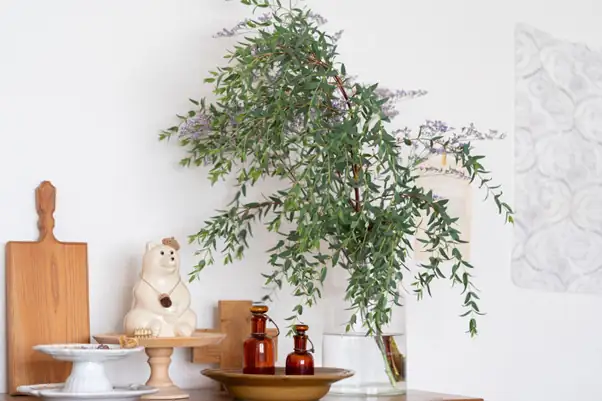
One of the key attractions of Nordic-style interiors is the natural texture of wood, which adds warmth and an earthy feel to the space. Since wood is often the base material in Nordic design, incorporating wooden elements into your accessories helps create a more cohesive and unified look.
Natural wood, particularly solid wood, is highly recommended because it blends beautifully with the natural surroundings. When choosing items for your interior, opt for pieces made from light, bright wood, not just for furniture and flooring, but also for decorative goods.
Practical items like wooden tissue boxes, trash cans, and small organizers can instantly elevate the Nordic feel of your space. Simply replacing everyday objects with wooden versions will make a noticeable difference in the overall atmosphere.
Additionally, styling wooden photo frames, sculptures, wood grain furniture, and candle holders on shelves or tables can further enhance the natural, warm vibe, creating a cozy and inviting environment.
Opting for simple and practical furniture arrangements
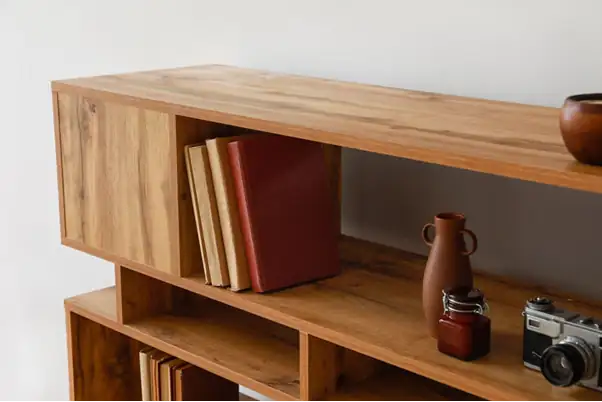
By arranging simple and highly practical furniture with a well-balanced margin, you can give your mind a sense of spaciousness. In addition, furniture that is suitable for Nordic interiors are characterized by a form that gives a sense of gentleness even among modern and sophisticated lines.
In addition, Nordic interiors are not only beautiful in appearance but are also designed with an emphasis on “easy to use” and “making life easier”. That is why it is called “functional beauty”.
The characteristics of furniture recommended for Nordic interiors are as follows.
- Lean design
By minimizing decoration and focusing solely on essential functions, a simple yet sophisticated beauty is achieved.
- User-friendly design with comfort
It is thoughtfully designed with attention to the user’s movements, hand placement, and seating comfort, ensuring you feel relaxed even during long periods of use.
- The beauty of materials and form
Many designs highlight the innate beauty of materials like wood, metal, and fabric, with structures and details that seamlessly blend into the surrounding environment.
- Timeless design built to last for years to come
Not swayed by passing trends, these designs remain timeless. Rooted in functionality, they continue to be valued for years to come.
Incorporation of comfortable fabrics
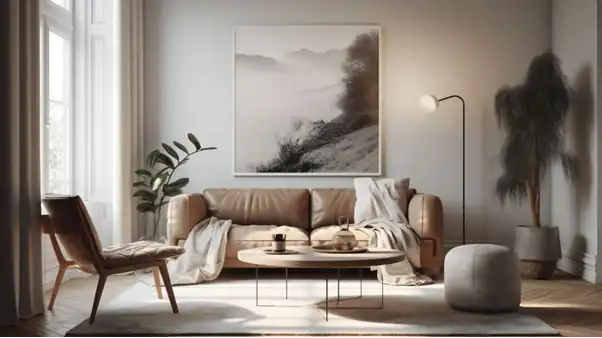
Choosing the right fabric is key to creating a comfortable space. When selecting fabrics for Nordic interiors, keep the following points in mind.
- Opt for natural fabrics
In Nordic interiors, natural materials like linen and wool are highly preferred. These tactile, warm materials help create a cozy and inviting atmosphere.
- Harmonized color tones
When using multiple fabrics, the color tones unify to create a cohesive space. For example, incorporating accent colors with a soft base like beige or light gray will enhance the Nordic atmosphere.
- Use fabric as an accent
We recommend using fabrics with bold patterns and colors for accessories like cushion covers and fabric panels. These pieces can serve as striking accents, adding character to a simple space.
By selecting fabrics with these considerations in mind, you can enhance the charm of Scandinavian interiors and create a warm, cozy atmosphere.
At Village House, a deposit, key money, processing fee, or renewal fee is not required (※). If you’re looking to save on initial costs, don’t hesitate to contact us for more information.
※Please note that a deposit may be required depending on the specific terms of the contract and the results of the screening process.
Related articles:

Hello, I’m Machiko Doi, a freelance writer who writes about housing and living in Japan.
I live in an 80-year-old house that I inherited from my grandparents along with my two shelter cats and daughter.
We live a relaxed life while repairing the house.
I like to cook vegetables from the garden and fresh fish caught by my father, and enjoy them with cold beer on a hot day or hot sake on a cold day.


